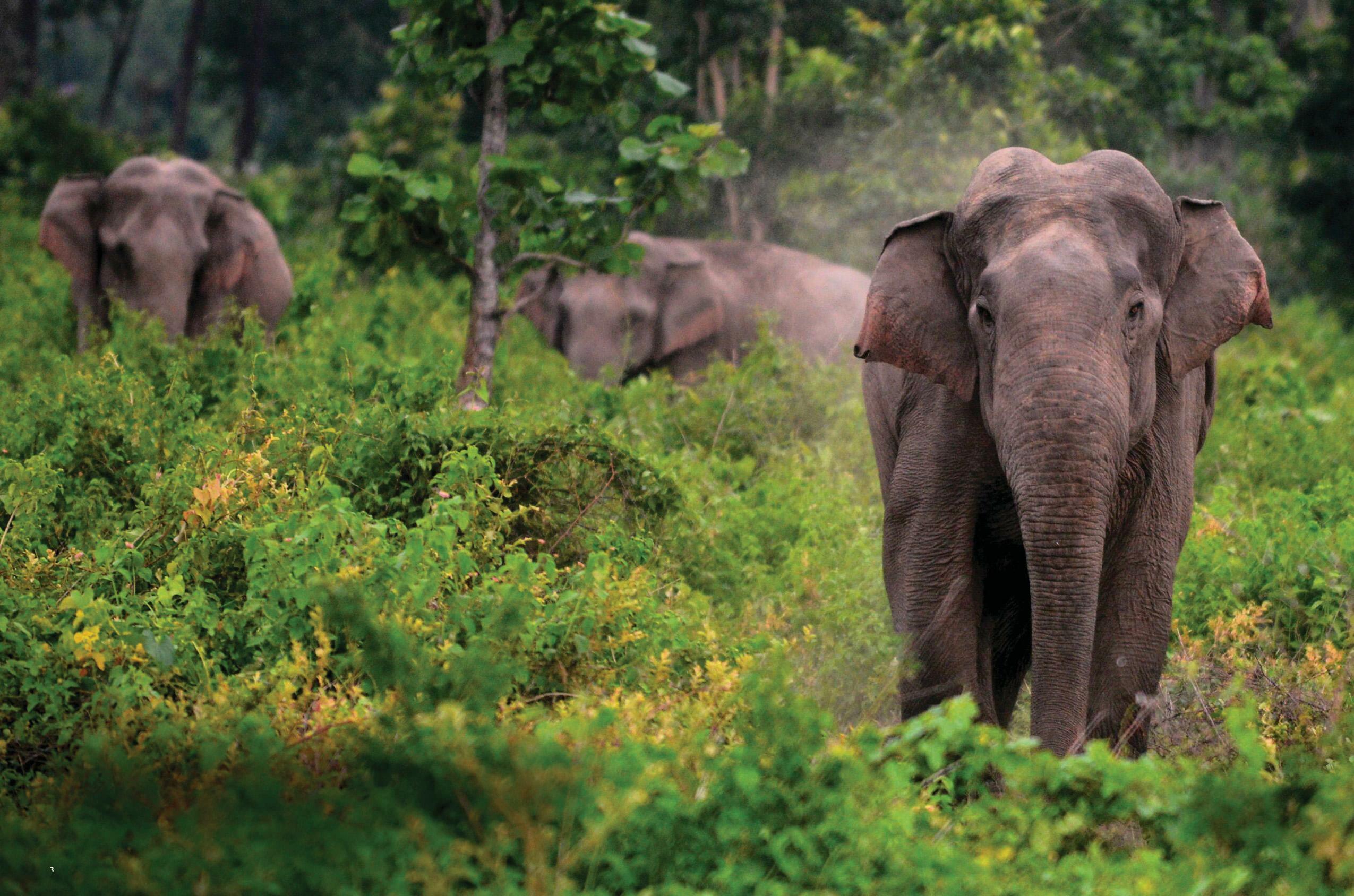
ELEPHANTS ARE valued more in India than all other animals put together," says Anish Andheria, CEO of Wildlife Conservation Trust. "Lord Ganesha, the most worshipped and revered Hindu God, is half-human and half-elephant."
Sadly, revered status isn't keeping these animals safe. Elephants were declared the National Heritage Animal of India in 2010 and granted Schedule 1 status - the highest protection level in the country, on a par with tigers. But elephants and people are frequently coming into contact, leading to horrific flashpoints of violence in which both are losing their lives. "Around 1,400 human and 300 elephant casualties occurred in India due to human-elephant conflict between 2018 and 2020," Andheria explains, the figure not including captive elephants.
Asian elephants (Elephas maximus) are listed as Endangered on the IUCN's Red List. Their numbers have declined by at least 50 per cent over the past three generations, largely due to habitat loss.
India is currently home to about 27,000 elephants, found in 17 states, including Arunachal Pradesh, Uttar Pradesh and West Bengal. While conflict between elephants and people is often associated with the African species, and more attention in India is paid to issues around tigers, leopards and other big cats, human-elephant conflict (HEC) is at crisis levels in the country.
As in Africa, the key issue is the lack of space. India recently overtook China as the most populated country in the world and is now home to 1.43 billion people, one sixth of the global population. About 65 per cent of the country's people live in rural areas. Industrial projects, such as mines and dams, along with roads and the exploitation of forests for agriculture, firewood or livestock-grazing, have also depleted natural elephant habitat.
This story is from the October 2023 edition of BBC Wildlife.
Start your 7-day Magzter GOLD free trial to access thousands of curated premium stories, and 8,500+ magazines and newspapers.
Already a subscriber ? Sign In
This story is from the October 2023 edition of BBC Wildlife.
Start your 7-day Magzter GOLD free trial to access thousands of curated premium stories, and 8,500+ magazines and newspapers.
Already a subscriber? Sign In

Flightless birds
Our pick of 10 curious birds that have lost the ability to fly

ALL YOU EVER NEEDED TO KNOW ABOUT THE Shoebill
THIS PREHISTORIC-LOOKING BIRD IS affectionately known by some as 'king of the marshes' as it is huge (up to 1.5m tall with a 2.4m wingspan) and resides in the freshwater marshes and swamps of East Africa.

Slime: protector, lubricant and glue
GOO, GUNGE, GUNK... WHILE THERE are many names for the stuff that makes things slippery or sticky, slime isn't a single material but a label for a variety of substances with similar physical properties. Those qualities are desirable to many living things, which is why slime is made by such a wide range of organisms.

How do parrots learn to swear?
THERE ARE FEW THINGS AS GLORIOUSLY entertaining as the effing and blinding of a potty-mouthed parrot.

Why are walruses so chubby?
AS A GENERAL RULE, TERRESTRIAL mammals are furry, while aquatic ones are fat. It doesn't work across the board: sea otters rarely leave the water but have the densest fur of any mammal.

What is the lotus effect?
WHEN YOU FIND YOURSELF WATCHING the clock on the wall of a dentist's waiting room, you can always pass a bit of time with a rummage through the bowl of fragrant botanical wonders next to the leaflets about expensive cosmetic work.

Are there any plants in Antarctica?
CONTINENTS DON'T COME ANY MORE inhospitable than Antarctica, where life must contend with the longest, darkest, coldest winters and a year-round blanket of snow and ice.

LANDLORD OF THE WILD
The humble aardvark is seldom praised for its work digging out homes for other animals

CRACK DOWN
As the new Amazon drama Poacher hits our screens, we take a look at the fight to end ivory poaching in India

Wild words
Spending time observing and writing about the natural world can be transformational